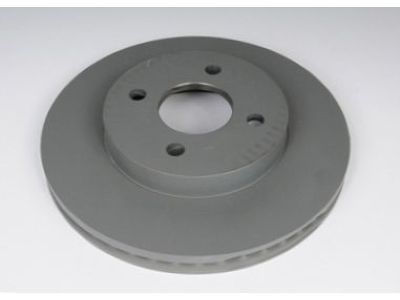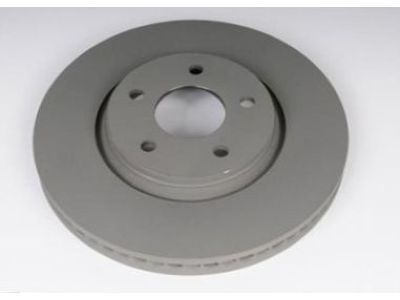My Garage
My Account
Cart
Genuine Saturn Ion Brake Disc
Disc Rotor- Select Vehicle by Model
- Select Vehicle by VIN
Select Vehicle by Model
orMake
Model
Year
Select Vehicle by VIN
For the most accurate results, select vehicle by your VIN (Vehicle Identification Number).
3 Brake Discs found
Saturn Ion Front Brake Rotor
Part Number: 19303829$85.72 MSRP: $161.75You Save: $76.03 (47%)Ships in 1-2 Business Days
Saturn Ion Brake Disc
The Brake Disc of Saturn Ion vehicles is a crucial part of the disc brake system provides the friction that is needed to halt the vehicle. Intended to be internally drilled, the Saturn Ion Brake Disc can have ventilation fins or vanes to expel heat, as heat is an enemy of Brake Disc performance during braking which is a common function of the vehicle. In the course of manufacturing, Saturn Ion has incorporated different types of Brake Discs such as; solid, vented, drilled and slottet. Although solid discs are interchangeable with non-performance models, vented discs enhance heat dissipation. Drilled and slotted are improved to improve heat transfer and for noise reduction but at the cost of faster pad degradation. Warping, cracking, and rusting are some of the problems that call for frequent check-up and servicing of the Saturn Ion Brake Disc to allow it provide the premier braking outcome.
Each OEM Saturn Ion Brake Disc we offer is competitively priced and comes with the assurance of the manufacturer's warranty for the part. Furthermore, we guarantee the speedy delivery of your orders right to your doorstep. Our hassle-free return policy is also in place for your peace of mind.
Saturn Ion Brake Disc Parts Questions & Experts Answers
- Q: How to inspect the Brake Disc on Saturn ION?A: To inspect the brakes, start by loosening the wheel lug nuts and raising the vehicle on jackstands. Remove the wheel and install the lug nuts to hold the disc in place. Then, remove the caliper and bracket as a unit, without disconnecting the brake hose, and suspend it out of the way. Visually inspect the disc surface for score marks and damage, checking both sides. If there is pulsating during brake application, suspect disc runout. To check runout, secure the disc to the hub with lug nuts and place a dial indicator about 1/2 inch from the outer edge of the disc. The reading should not exceed the specified runout limit. If it does, the disc needs refinishing. Ensure the disc is not machined below the minimum thickness, which is cast or stamped into the disc. Use a micrometer to check the thickness. For removal, mark the disc in relation to the hub and remove it. If there are wave washers, cut them off. If the disc is stuck, use a mallet and penetrating oil. Clean the inner opening of the disc and the hub area before reinstalling the disc. Align the mark made and install the caliper mounting bracket and caliper. Then, install the wheel and lug nuts, lower the vehicle, and tighten the lug nuts. Depress the brake pedal to bring the Brake Pads into contact with the disc. Bleeding is only necessary if the brake hose was disconnected. Finally, check the brake operation before driving the vehicle.















